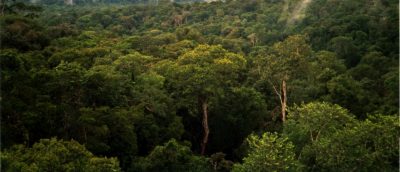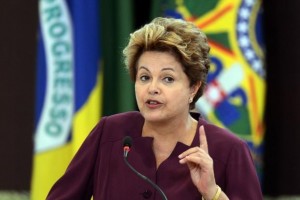China Must Avoid a Role in Destruction of Amazon
Beijing could be forever tarnished if it does ‘dirty business’ with the Bolsonaro government in Brazil

China is South America’s top trading partner. Together, China’s policy banks – the China Development Bank and Export-Import Bank of China – are the top source of development finance for the whole of Latin America.
Over the past few decades, the Brazilian government, leading national companies and multinational corporations have configured what Fernando Mires, already in 1990, defined as the “Amazon mode of production”: a terribly predatory, technological-intensive mode of production and destruction, including subjugation of indigenous populations in slave-based working conditions, with everything geared for export to global markets.
The Amazon is spread out over 6.5 million square kilometers covering two-fifths of Latin America – half of Peru, a third of Colombia, a great deal of Bolivia, Venezuela, Guyana, French Guyana and Suriname, and most of all, 3.5 million square kilometers in Brazil.
The original population diversity was staggering. Before the arrival of the Europeans in Brazil in 1500, there were no less than 1,400 tribes, 60% of them in the Amazon. Ethnologists marveled that nowhere else in the world compared to the linguistic diversity in tropical South America.
The Tupi-guarani tribe even constituted a sort of “empire”, occupying a huge territory from the Andes to the Pampas in southern Brazil. A sort of “proto-state” traded with the Andes and the Caribbean. This all laid to rest the Western-peddled myth of a “savage”, un-civilized Amazon.
Now let’s fast-forward to the current Western outcry over the Jair Bolsonaro government’s destruction of the Amazon.
Brazil, still under the second presidential term of Dilma Rousseff – later impeached under spurious charges – was a signatory of the 2015 Paris agreement on climate change. Article 5 of the agreement rules that parties “should take action” to preserve endangered forests. Brasilia pledged to protect the Amazon by restoring 12 million hectares of forests by 2030.
And yet under Bolsonaro, “should take action” metastasized into “reverse previous action.” The new mantra is “Amazon development.” In fact, a turbo-charged and even more predatory 2.0 version of the “Amazon mode of production,” much to the horror of Western environmentalists, who fear an imminent transformation of the Amazon into a dry savanna, with dire consequences for the whole planet.
Staggering natural wealth
The Brazilian Army is fond of noting that the Amazon’s natural wealth has been evaluated at a staggering $23 trillion. This is a 2017 figure announced by General Eduardo Villas Boas, who added:
“Brazil is a highly endowed individual imprisoned in the body of a teenager. The Amazon is practically abandoned, there’s no national project and density of thinking.”
In fact, there is a national (military) project to “develop” the Amazon at breakneck pace, while preventing, by all means, the “Balkanization of the Amazon” and the action of Western NGOs.
In April this year, one of Bolsonaro’s sons posted a video of Dad engaged in a “surprising” conversation with four indigenous people in Brasilia.
Top anthropologist Piero Leirner – a specialist on the Brazilian military and their activities in the Amazon – explains the context. The Bolsonaro government carefully picked four natives involved in the business of soybeans and mining. They spoke for themselves. Immediately after, an official indigenous people association released a letter disowning them.
“That was classic Divide and Conquer,” Leirner argued. “Nobody paid attention to the letter. For most of Brazil, the case was closed in terms of ‘social communication’ – solidifying the government’s narrative of NGOs fighting for the internationalization of the Amazon.”
Mining giants in Brazil would rather have indigenous peoples as spokespersons instead of the military. In fact, it’s a maze of interlocking interests – as in captains and colonels in business with mining entrepreneurs acting in protected indigenous areas.
What happened during these past few years is that most indigenous peoples ended up figuring out they cannot win – whatever the scenario. As Leirner explained:
“Belo Monte [the world’s third-largest dam] unveiled the real game: in the end, the dam practically works to the benefit of mining companies, and opened space for Belo Sun, which will excavate the whole of Xingu in search of gold.”
So that’s the perverse project inbuilt in the “development of the Amazon” – to turn indigenous peoples into a sub-proletarian workforce in mining operations.
And then there’s the crucial – for the industrialized West – niobium angle (a metal known for its hardness). Roughly 78% of Brazilian niobium reserves are located in the southeast, not in the Amazon, which accounts at best for 18%. The abundance of niobium in Brazil will last all the way to 2200 – even taking into consideration non-stop, exponential Chinese GDP growth. But the Amazon is not about niobium. It’s about gold – to be duly shipped to the West.
Rolling down the river
Bolsonaro is keen to bring roads, bridges and hydroelectric plants to the most remote areas of the Amazon. Under the “sovereignty” mantra, he has promised to impose the hand of the state in the strategic Triple-A area – Amazon, Andes, Atlantic Ocean – thus countering the alleged intent of Western NGOs of creating an independent strip for environmental preservation.
So, how does China fit into the Amazon puzzle? A recent report addresses some of the hard questions.
Since last year, Beijing officially started to consider the whole of Latin America as a “natural extension” of the Belt and Road Initiative (BRI), as well as an “indispensable partner.” That was spelled out by Foreign Minister Wang Yi at the 2018 China-Community of Latin American and Caribbean States Ministerial Forum.
All of BRI’s guidelines now apply – and that includes the Amazon: policy cooperation, infrastructure development, investment and trade facilitation, financial integration, and cultural and social exchange.
China’s internal green drive – restricting coal production, supporting solar panel factories, remaking Hainan island into an eco-development zone – will have to be translated into its projects in the Amazon. That means Chinese companies will need to pay extremely close attention to local communities, especially indigenous people. And that also means that the Chinese will be under intense scrutiny by Western NGOs.
Brazil may have ratified the International Labor Organization’s Convention 169 on Indigenous and Tribal Peoples, known as ILO 169, which enshrines the rights of indigenous communities to be consulted by the state on decisions that directly affect them.
Yet with less than seven months of Bolsonaro in power, all that is in effect null and void.
There’s slim hope that an exhaustive set of guidelines for large projects in the Amazon established by the Center of Sustainability Studies at the Getulio Vargas Foundation in Sao Paulo, linked to the World Bank, may be respected by the government. But no one is holding their breath.
Key projects with Chinese involvement include the Amazon waterway in Peru, which featured prior consultations with over 400 indigenous villages, according to the government in Lima.
But most of all there’s the $2.8 billion, under construction 2,500 km-long Belo Monte Transmission Line, with an installed capacity of 11.2 gigawatts. China’s State Grid is part of the consortium, with financing coming from the Brazilian National Development Bank. The first and second transmission lines directly affect the Amazon ecosystem and run near 10 conservation areas and an array of ethnic groups.
The “China in the Amazon” report correctly notes that
“Chinese companies are not well attuned to the importance of direct engagement with local non-governmental stakeholders, and have faced repeated costs, work stoppages, and delays as a result. Chinese deference to host-country policies should extend to the commitments by host countries to international treaties and law, such as ILO 169 and its standard of free, prior, and informed consent for indigenous peoples. Indigenous organizations and civil society organizations in the Amazon region have a long and strong trajectory of actively participating in government decisions relating to the use of indigenous territories and natural resources.”
The report suggests establishing a “multidisciplinary working group comprised of NGOs, local indigenous groups, academics, and scientists to review existing principles and standards” for sustainable infrastructure projects.
The chances of this being adopted by the Bolsonaro administration and endorsed by the Brazilian military are less than zero. The Big Picture in Brazil under Bolsonaro spells out neocolonial dependence, over-exploitation of workers, not to mention indigenous peoples, and the complete expropriation of Brazilian natural wealth.
Only a pawn in their game
China may be Brazil’s top trade partner. But Beijing must tread carefully – and strictly enforce BRI guidelines when it comes to projects especially involving the Amazon.
There’s no way the UN Security Council, with climate change in mind, would ever sanction Brazil for the destruction of the Amazon. France and Britain would be for it. But Russia and China – both BRICS members – would certainly abstain, and the US under Trump would vote against it.
Brazil is now a privileged pawn in the most important geopolitical game of the 21st century: the clash between the US and the Russia-China strategic partnership.
The last thing Beijing needs in terms of global public relations is to be branded as an accomplice in the destruction of the Amazon.
*
Note to readers: please click the share buttons above or below. Forward this article to your email lists. Crosspost on your blog site, internet forums. etc.
This article was originally published on Asia Times.
Pepe Escobar is a frequent contributor to Global Research.



